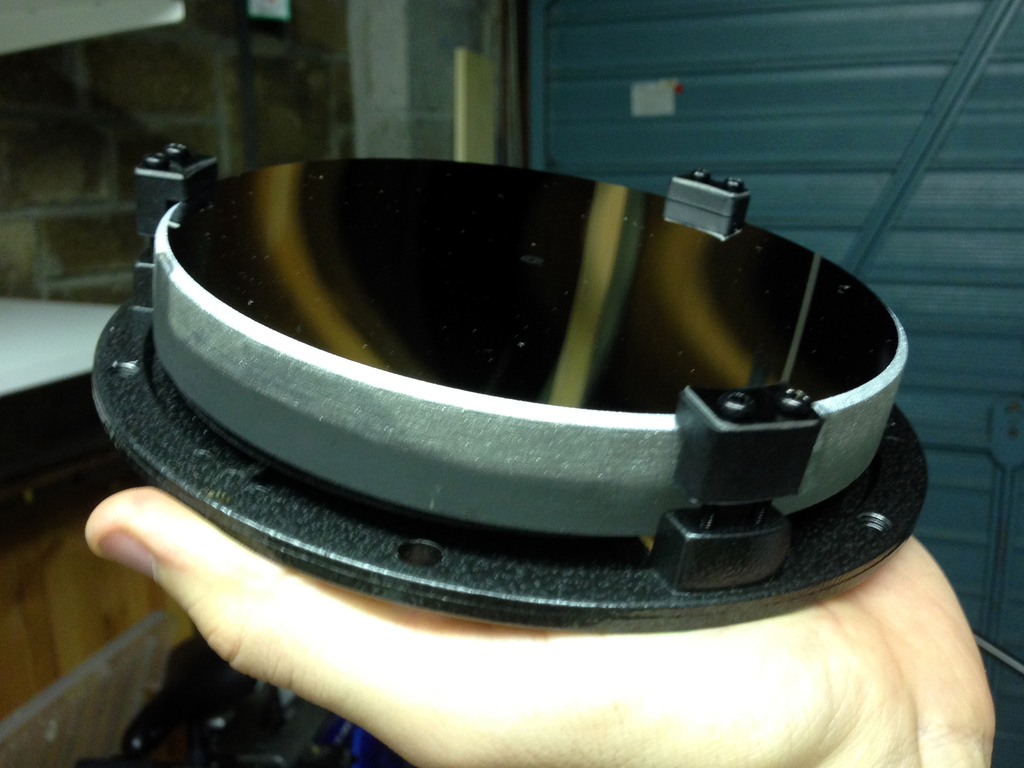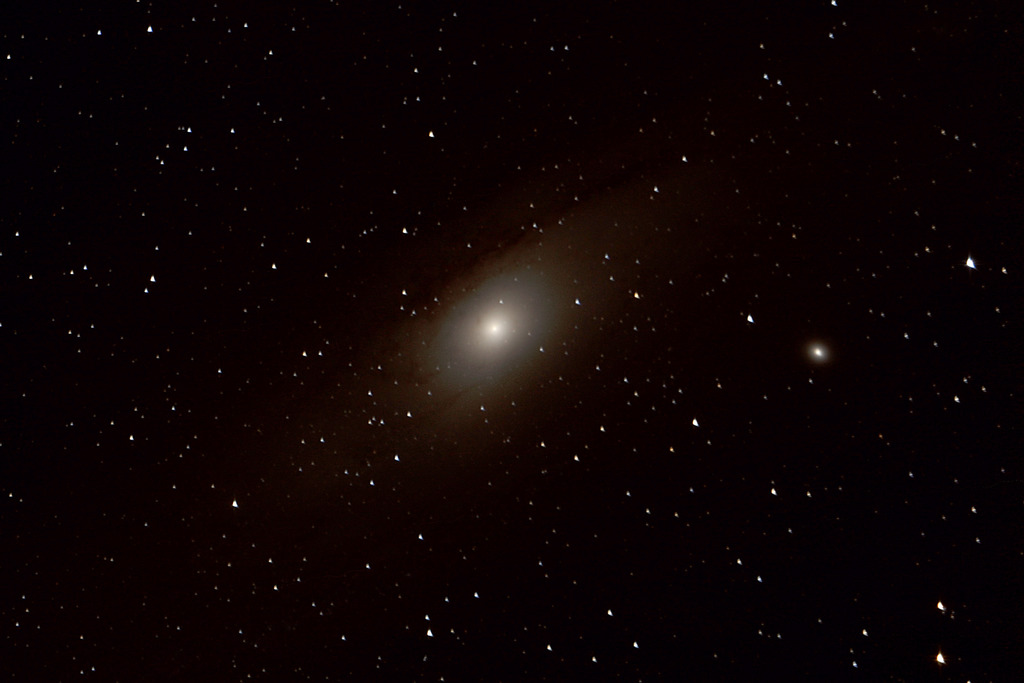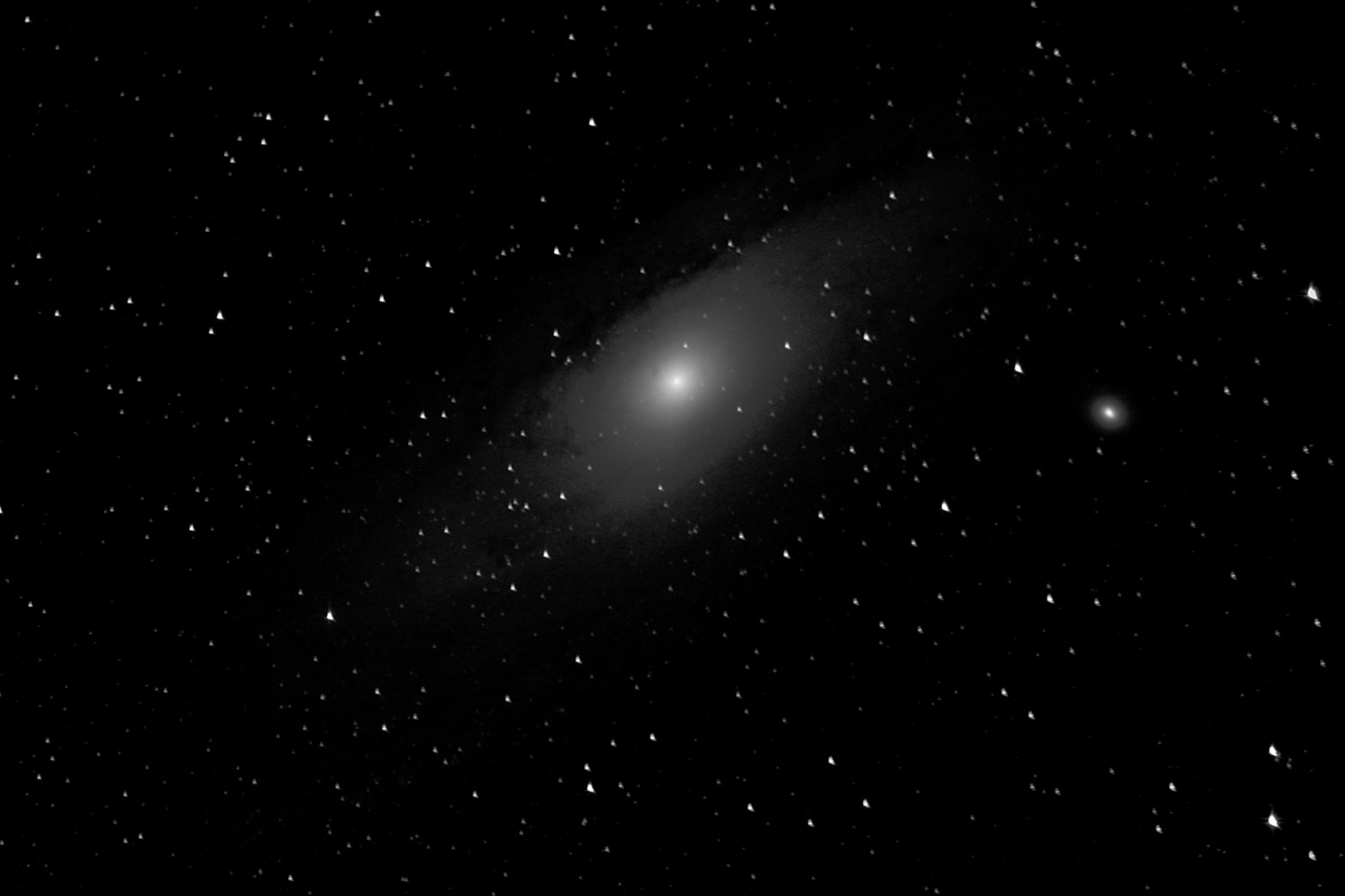Over a week ago now I had an intense astronomy evening with my tame scientist. There weren’t many hours between sunset and moonrise so we worked fast to try and prove that we had a reliable autoguiding setup, having been plagued by various failures and obstacles the last few times we’d tried (see below) WeContinue reading “Deep space”
Tag Archives: telescope
Pinched optics – the cure
If you’ve been following my geeky astronomical posts lately, you’ll see that my new telescope suffers from triangular stars, caused by pinched optics. I’ve also been posting about the problem on Astronomy Forum. Just to recap, the telescope currently produces pictures like this. The effect is subtle, but if you click on the picture toContinue reading “Pinched optics – the cure”
Pinched optics
I’ve been having an ongoing problem since buying my telescope a couple of months ago. Stars appear triangular, as you can see in this picture of Pleiades. I’ve done some research and it seems the most common cause of triangular stars is a defect called “pinched optics”. The primary mirror in is held in placeContinue reading “Pinched optics”
First light part 2
This morning I published a picture of the Andromeda galaxy, with some notes about my method a vow to improve my technique. I pondered the image processing and decided to have another go this afternoon. This is the same dataset, but different processing. It’s a colour image and unfortunately shows some light pollution, although IContinue reading “First light part 2”
First light: GSO imaging Newtonian telescope
Hot on the heels of my recent post about telescopes for imaging, in this post I’d like to share with you the very first image taken with my new GSO 6″ f/5 imaging Newtonian – which was funded by selling my two previous telescopes and a couple of camera lenses. Tonight was the first clearContinue reading “First light: GSO imaging Newtonian telescope”
Finding the perfect astro imaging setup
Well, “perfect” is a strong word. No matter what you’ve got, there’s always something better. This article is about my hunt for some suitable equipment for deep-space astro-imaging, inspired by the recent purchase of a new telescope for imaging. Ideally I’d be out using it right now, but it’s forecast to be cloudy until furtherContinue reading “Finding the perfect astro imaging setup”
Andromeda Galaxy
Some time ago I got a new telescope – a Celestron 130EQ-MD Newtonian rather than a Celestron NexStar 127 SLT Cassegrain-Maksutov formula. In short, it is more sensitive to light but sacrifices magnification. It’s perfect for deep-space observation like nebulae and galaxies, while the Maksutov is better for observing planets which are much brighter andContinue reading “Andromeda Galaxy”
Messier 5
Last night it was clear and there was no moon. I headed out with my telescope to see what I could see, and ended up photographing Messier 5, which is a globular cluster. This composite is made from about 100 images, each 3 seconds exposure with my Celestron NexStar 127 SLT and Canon EOS 600D,Continue reading “Messier 5”
Jupiter – more magnified than ever before
I’ve photographed Jupiter before with my 5″ telescope. Its focal length is 1500mm which means Jupiter is quite small on my camera’s sensor when using the prime focus method. For Christmas, Hannah bought me a 5× Barlow lens which gives me an effective focal length of 7500mm. Now, Jupiter is 5× wider and 5× taller,Continue reading “Jupiter – more magnified than ever before”
Making a battery box for my Celestron telescope
Background I have a Celestron NexStar SLT 127 telescope. For those who don’t know, it’s a battery-powered telescope which has a small computer to navigate around the skies and steer the telescope. It’s quite hungry for power – the telescope takes 8 AA batteries. Depending on the type of batteries you use and the temperature,Continue reading “Making a battery box for my Celestron telescope”








